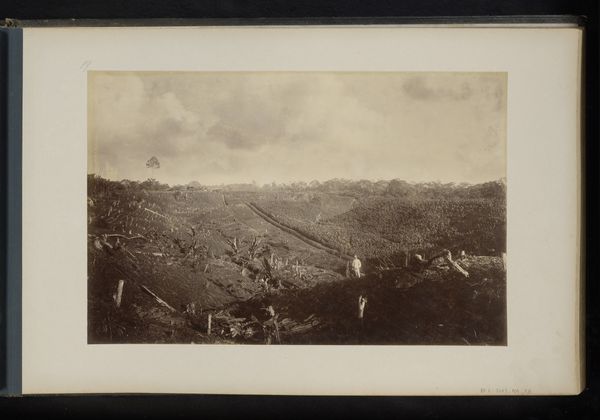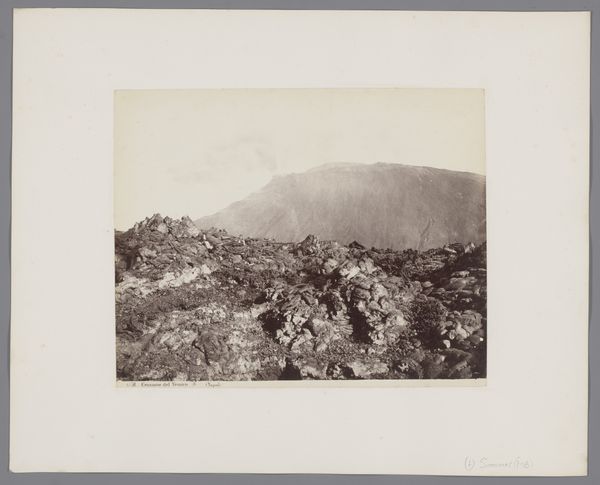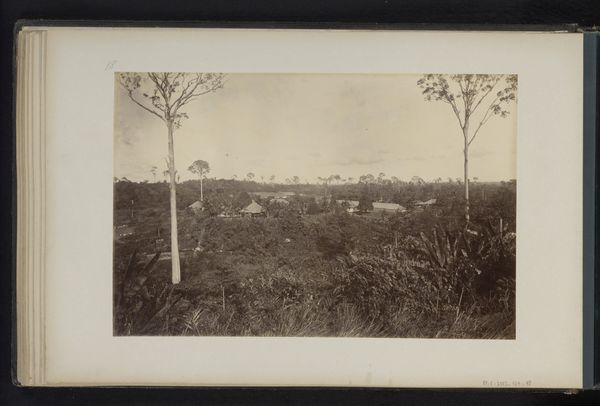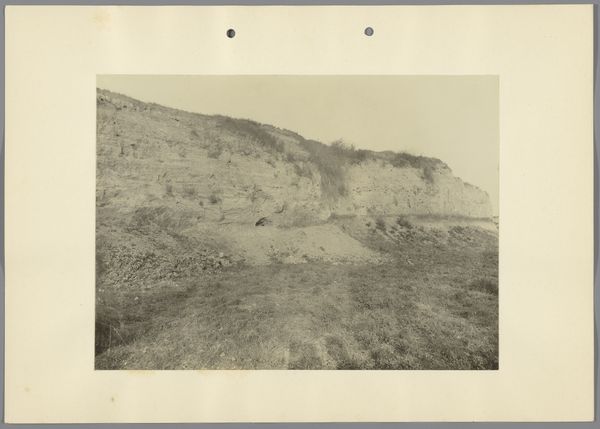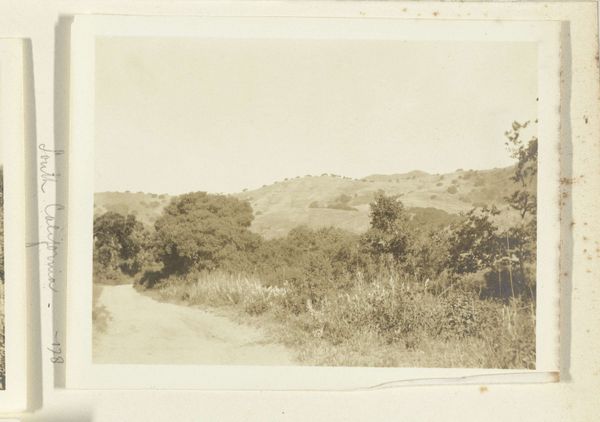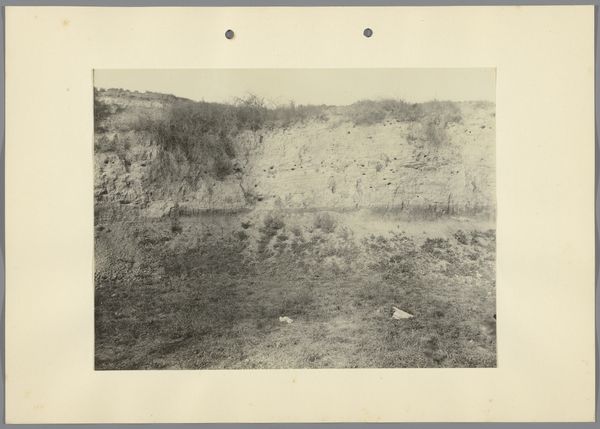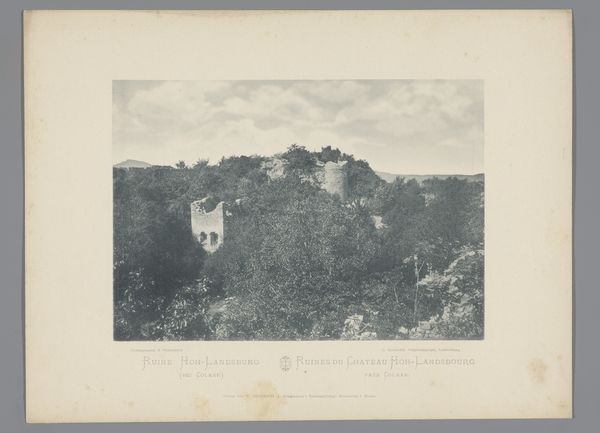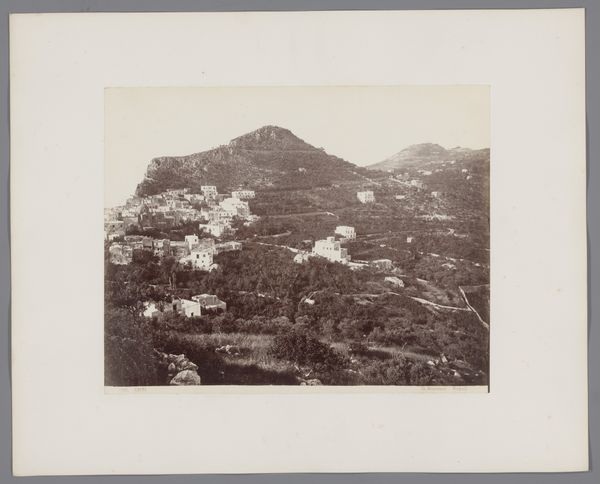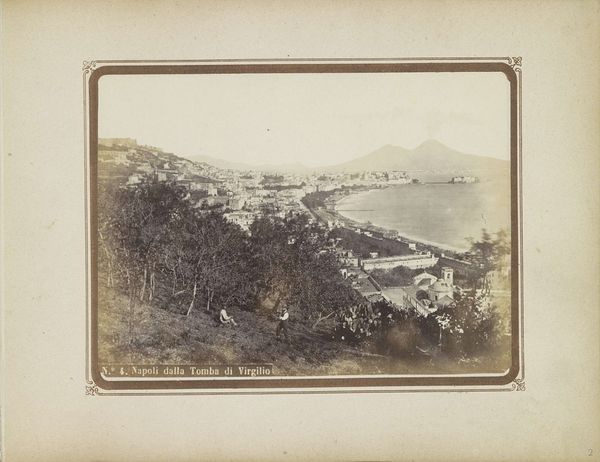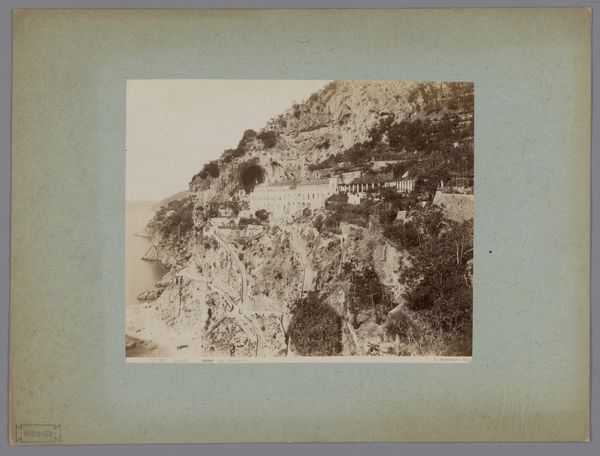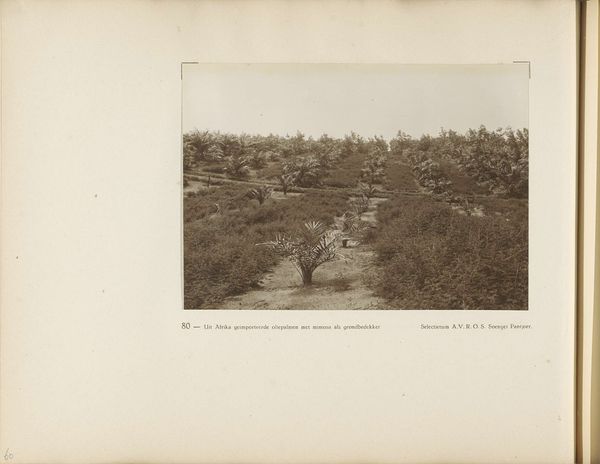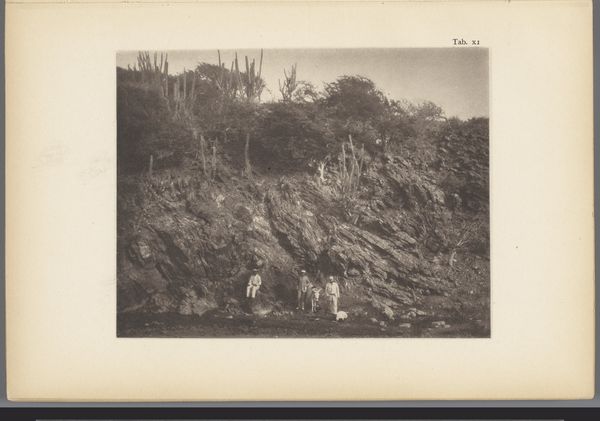
Gezicht op de berg Sinabourg in Boven-Deli, Sumatra, met op de voorgrond gekapt oerwoud c. 1892 - 1900
0:00
0:00
photography
#
landscape
#
photography
#
orientalism
Dimensions: height 241 mm, width 370 mm
Copyright: Rijks Museum: Open Domain
Curator: This landscape, entitled "Gezicht op de berg Sinabourg in Boven-Deli, Sumatra, met op de voorgrond gekapt oerwoud," translating to "View of Mount Sinabung in Upper Deli, Sumatra, with Deforested Jungle in the Foreground," was captured by Heinrich Ernst & Co. sometime between 1892 and 1900. Editor: Wow, it's a melancholic scene, isn't it? All that raw earth exposed. I immediately feel this somber sense of loss. The monochrome palette really reinforces it, it’s a portrait of an environmental tragedy, a wounded landscape trying to breathe. Curator: That's a very evocative reading. Consider, though, the Orientalist lens. It presents a specific power dynamic between the colonizer and the colonized. It isn't simply an objective record; it frames Sumatra for a European audience. The "exotic" land is showcased alongside evidence of its exploitation. The felling of the jungle represents resource extraction and the imposition of colonial power, not merely "melancholy." Editor: You are absolutely right. It's easy to fall into the trap of aestheticizing something that's deeply rooted in a brutal history. But does the artist consciously aim to present the jungle's felling, or do they document what's in front of them, in the same vein, say, a mountain scene in the Alps? What if, inadvertently, they present their perspective of the scene without making a point on the moral implications? Curator: The intent is perhaps ultimately unknowable, but we cannot ignore the economic imperatives driving the Dutch East India Company's presence in Sumatra at the time. Photography, a modern technology, became another tool to document, survey, and ultimately, control the resources and inhabitants of these territories. That shapes what's "in front of them." Editor: Point taken. Perhaps the raw emotion I initially perceived stems from that tension, a kind of uneasy witnessing. A landscape pregnant with consequence. It nudges us, even now, to acknowledge the impact of our actions. Curator: Indeed. It serves as a powerful visual document to provoke that essential dialogue between the colonial gaze, environmental exploitation, and historical accountability. Editor: It makes me wonder, what does it really mean to “see” something and truly understand its depths. A question mark etched into the hills of Sumatra.
Comments
No comments
Be the first to comment and join the conversation on the ultimate creative platform.
